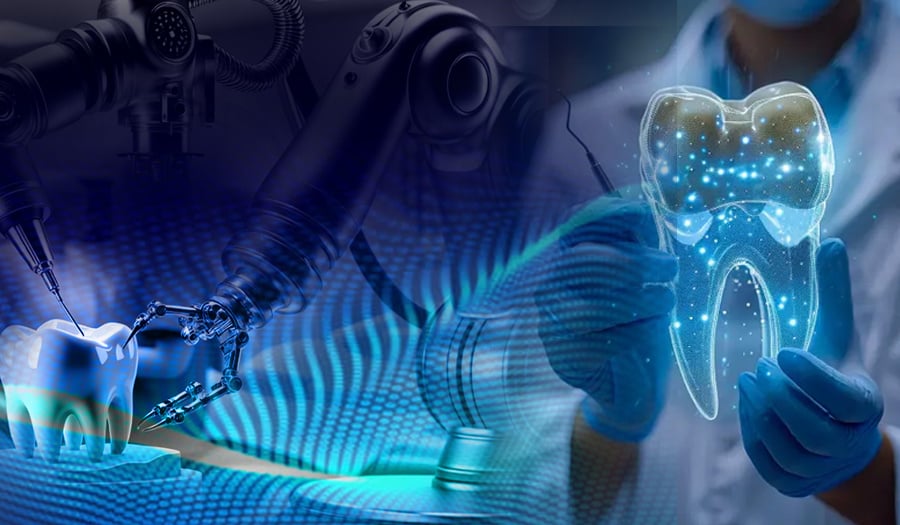Treating The “Mature” Adult - Dr. Bill Paveletz' on 'A Tale of Two Hygienists' Podcast
VOCO is thrilled to introduce a podcast that's a must-listen for every dental hygienist seeking to enhance their professional knowledge while being...
2 min read
_ : 09/268/2024

The recent announcement of the world’s first fully automated dental procedure, performed by a U.S.-based AI company, has certainly captured the attention of the dental community. This groundbreaking achievement highlights the incredible strides technology is making in the field of oral health care. Yet, it also invites reflection on the role of dental professionals as we move into this new era of technological integration.
As technology advances, it's natural for dental professionals to consider how these developments will impact their practice and patient care. While AI and robotics offer exciting possibilities, the human element in dentistry remains irreplaceable. The experience, judgment, and personalized care that a dentist brings to each patient interaction are fundamental to achieving the best outcomes.
Technology as a Partner in Patient Care
There’s no denying that technology is becoming an increasingly valuable tool in dentistry. From more accurate diagnostics to enhanced treatment planning, AI and robotics are offering new ways to improve efficiency and precision. These tools have the potential to complement the skills of dental professionals, enabling them to focus on what they do best: providing personalized, high-quality care to their patients.
Rather than viewing technology as a replacement, it can be seen as a partner that helps dentists deliver even better care. For example, automated systems might assist in performing routine tasks, freeing up dental professionals to concentrate on more complex procedures and patient communication. This partnership can lead to more efficient workflows, better patient experiences, and, ultimately, improved health outcomes.
As these technologies become more integrated into dental practices, the role of the dentist will naturally evolve. This evolution isn’t about diminishing the importance of dental professionals, but rather about enhancing their ability to provide care. Dentists will continue to be at the forefront of patient care, making critical decisions that technology alone cannot address.
Dentistry has always required a blend of technical skill and human intuition. Every patient is unique, with specific needs that must be understood and addressed. While AI might provide insights or perform certain tasks, it is the dentist who will interpret this information and tailor it to the individual patient’s needs.
In this evolving landscape, the materials and tools used in dental procedures remain as important as ever. The choice of materials can significantly impact the success of a procedure and the long-term health of the patient. As technology enhances certain aspects of dental work, the materials chosen by the dentist play a crucial role in achieving the desired outcomes.
These materials are designed to work seamlessly with the advanced technologies now available, but they still rely on the skilled hands of a dental professional. The precision and care with which a dentist applies these materials are what ultimately ensure the best results for patients.
As we look to the future of dentistry, there is much to be optimistic about. The integration of AI and robotics into dental practices, no matter how far off, will undoubtedly bring new opportunities to improve patient care, particularly in more remote areas where access is limited. However, the role of the dentist remains vital. Technology may enhance what is possible, but it is the expertise, judgment, and human touch of the dentist that will continue to be at the heart of effective dental care.
In this evolving field, the focus should remain on combining the best of both worlds—harnessing the power of technology while maintaining the irreplaceable value of human expertise. This balanced approach will ensure that patients receive the highest standard of care now and in the future. That being said, change and innovation bring opportunities that, while unfamiliar, may have the potential to enhance patient outcomes and practitioner capabilities.

VOCO is thrilled to introduce a podcast that's a must-listen for every dental hygienist seeking to enhance their professional knowledge while being...

In the Beginning Adhesive dental restorations have had an incredible impact on the clinical dental procedures that are performed today. Before the...